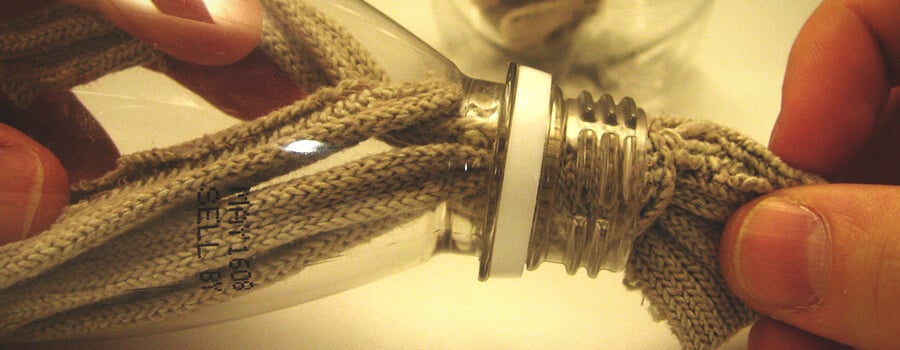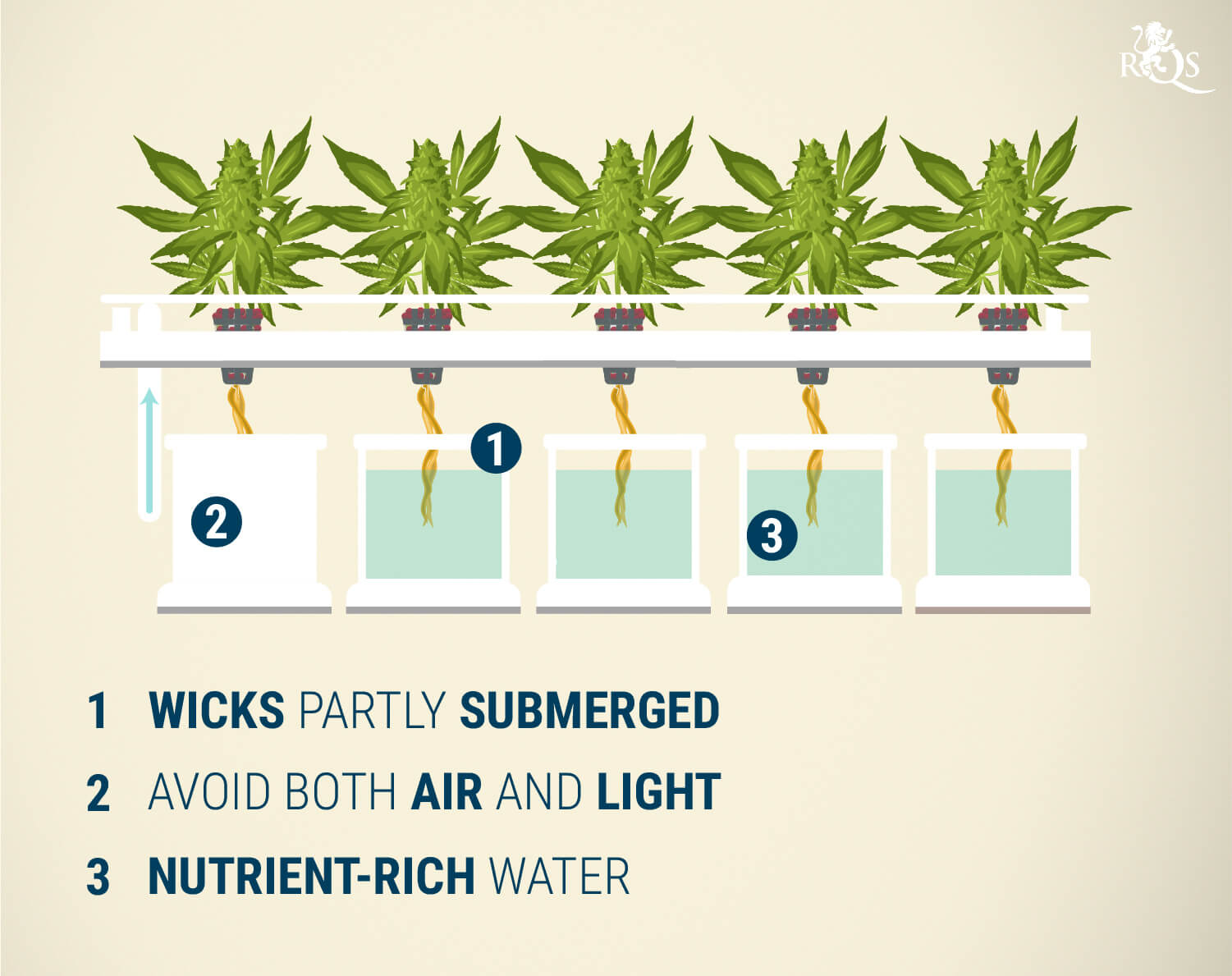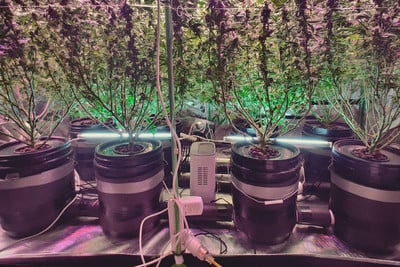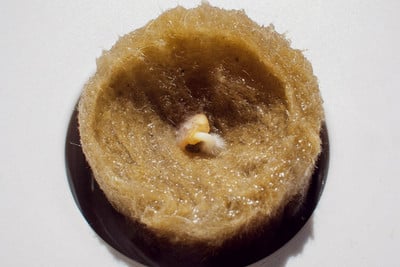.

Everything You Need To Know About Hydroponic Wick Systems
Hydroponic growing systems function without soil. Instead, they rely on a nutrient-rich solution to give your plants everything they need. Despite removing a lot of the risks associated with soil, setting up a hydroponics system typically requires an investment of both time and money. Hydroponic wick systems break that trend.
Contents:
WHAT IS A HYDROPONIC WICK SYSTEM?
Wick systems are easy to understand, simple in their components, low-maintenance, and cheap to construct. Although they are still part of hydroponic growing, they do not include any pumps or air stones. The removal of these components makes wick systems the simplest form of hydroponics.
The entire concept of a wick system is based on capillary action; a process in which liquids travel against gravity through a piece of cloth or bandage. The plant provides the power to lift the solution up into its roots, rather than the other way around.
Because the plant is in the driver's seat, it will only ever draw the liquid it needs. The wick needs to be long enough to be submerged in your liquid solution, but also so the other end of the wick is making contact with your plant's root system. We also need to swap out soil for an alternative growing medium. Sand, gravel, or perlite are all viable alternatives. Each one can retain and absorb moisture. The exact type of medium you choose will depend on the efficacy of your wick.

HYDROPONIC WICK SYSTEMS ARE A FANTASTIC CHOICE FOR BEGINNERS
If standard hydroponic systems typically require expensive equipment and a detailed understanding of growing cannabis, what makes the wick system so desirable? While you will still need a conventional understanding of what is required to grow cannabis, wick systems remove several complications that can prove troublesome for novice growers.
The lack of soil alone removes risks like pests, mould, and contamination. The inclusion of a wick provides a constant supply of nutrient-rich water. The tendency as a beginner is to overwater plants in fear they are not getting enough water. Wick systems passively supply plants with only the water they need. Passive systems are silent and do not require any electricity. Finally, even though there are complete kits available, a wick system can be constructed using household materials. And thanks to the lack of moving parts, the danger of elements failing or breaking is incredibly slim.
CONSTRUCTING YOUR OWN HYDROPONIC WICK SYSTEM – DIAGRAM
We have spoken at length about the concept and benefits of a hydroponic wick system. Now let's cover how you can make your own. A quick note before we delve into the details; the most crucial aspect to consider is the quality of your wick. After all, it is the most integral part of a hydroponic wick system. The material of your wick will directly dictate the speed and amount of liquid it is capable of absorbing and transporting to your plant.
Everyday household items that can be used as a wick include nylon rope, mop head strings, strips of old clothes, and propylene strips. You can test each one in coloured water beforehand. After at least an hour, you should have some indication of how far and fast the water travels. Lastly, for best results, use two wicks per plant.


INSTRUCTIONS
- Fill a small bucket or container with your nutrient-rich water. Ideally, the container needs to be slightly smaller in circumference to your growing pot, and opaque. The container will act as your reservoir, providing water and nutrients to your plant.
- Next, take the pot you plan to use for your plant and place both wicks in the centre. There should be a small hole at the bottom of the pot so that the wicks can hang down.
- Fill the plant pot with your chosen growing medium, making sure the wicks are long enough to come into contact with your plant's root system and to be submerged in your nutrient solution.
- Wick length may need adjusting. However, once you are happy, the plant pot can be placed on top of the container from step one. The pot with the plant in it should now be suspended above the water, with the wicks partly submerged.
- To prevent any pests or contamination, ensure the reservoir at the bottom is sealed. You want to avoid both air and light from coming into contact with your liquid solution.
You have just built your first hydroponic wick system! You will need to observe the level of solution in the reservoir to check when it needs topping up. The length of time between top-ups will vary depending on the thirst of the plant.
DISADVANTAGES
We have spoken about the benefits of a wick system throughout this article. Despite its simplicity, it is not without flaws and limitations, such as:
- Not suitable for larger, thirstier plants
- Growing medium can retain nutrients, causing a toxic buildup
- Water in the reservoir can become stagnant
- Mould can occur if the system is not cleaned regularly
- If the reservoir is sealed, getting oxygen to roots can be an issue
- The solution still needs to be routinely tested for correct pH value
One final piece of equipment that can negate some of the disadvantages is a pump connected to an air stone. It will provide oxygen to the water and prevent a buildup of waterborne diseases. It does, however, increase the initial cost, and it requires you to have your wick system near a power source. Including a pump makes the entire system no longer passive.

IS A HYDROPONIC WICK SYSTEM RIGHT FOR YOU?
With a relatively equal number of benefits to its disadvantages, utilising a hydroponic wick system is an appealing prospect. As a novice grower, a significant amount of complexity is removed. Alas, wick systems are easy to build, but difficult to master.
The material and length of your wick, the amount of solution, and frequency of refilling—all of these factors are unknown until you start using and experimenting with this type of growing method. Although wick systems will never be suitable for large-scale commercial operations, they are ideal for a few plants being produced at home. Given the cost of constructing a wick system, what have you got to lose?












































